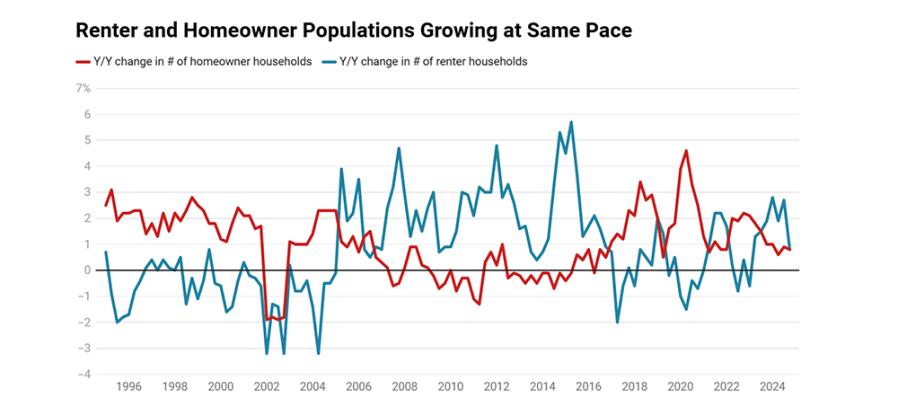
Redfin Reports Renter Population Grew 1% in Fourth Quarter

(Image courtesy of Efrain Alonso/pexels.com)
The number of renter households in America increased 0.8% year over year to 45.4 million in the fourth quarter—the slowest growth since the first quarter of 2023, according to a new report from Redfin.
The number of homeowner households also rose 0.8% to 86.9 million—a growth rate that’s little changed from recent quarters, Redfin found. That marks the first time in more than a year that the number of renter and homeowner households increased at the same rate. Prior to this, the number of renter households had been growing faster for four straight quarters.

“Owning a home used to be the crux of the American dream, and while many still consider it a rite of passage, a lot of people are opting to rent for longer because they can’t afford to buy a place of their own,” Redfin Chief Economist Daryl Fairweather noted. “Even people who can afford to buy homes are choosing leases over mortgages, often because they want a flexible, low-maintenance lifestyle, or want to invest their money somewhere other than real estate. Affluent renters have become more common in nearly three-quarters of major metros since 2019.”
Just over one-third (34.3%) of U.S. households rent, while nearly two-thirds (65.7%) own—rates that have remained pretty steady over time. But the rentership rate is much higher in pricey coastal metros, Redfin noted.
In New York, 51.9% of households rented in the fourth quarter—the highest share among the 75 largest U.S. metropolitan areas. Next came Los Angeles (51.5%), Albany, NY (48.4%), Fresno, CA (48.3%) and San Francisco (46.2%).
Rentership rates tend to be highest in places where it’s expensive to buy a home. All but two of the aforementioned metros (Fresno and Albany–New York’s state capitol) have median home sale prices above the national level.
Renting is least common in places with relatively low home sale prices. In Cape Coral, Fla, just 15.5% of households rent—the lowest share among the metros Redfin analyzed. It’s followed by Dayton, Ohio (21.2%), Toledo, Ohio (21.9%), Columbia, S.C. (22%) and North Port, Fla. (22.3%).
This is based on a Redfin analysis of U.S. Census Bureau data going back to 1994. A renter household is defined as one where the head of the household reports to the Census that they are renting out the property, while a homeowner household is one where the head of household reports they own the property. The number of homeowner and renter households have been hovering near record highs because the U.S. population is at a record high.
